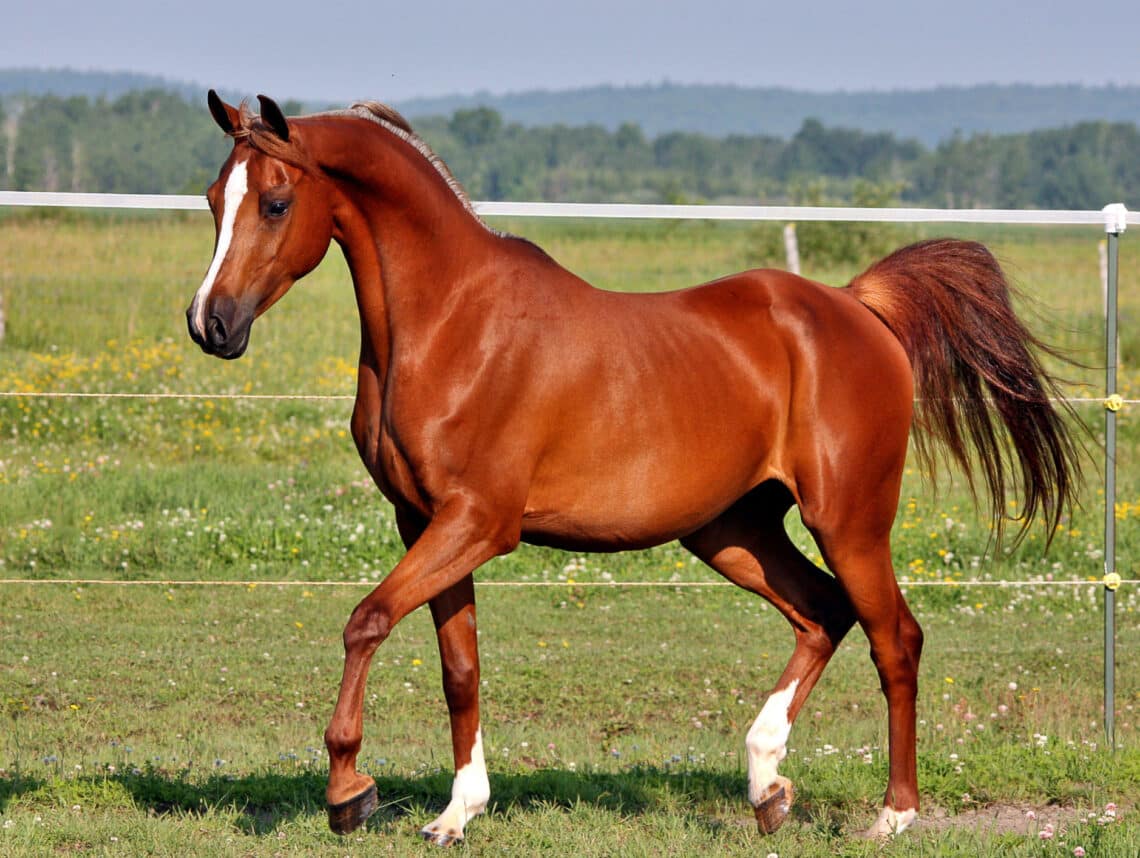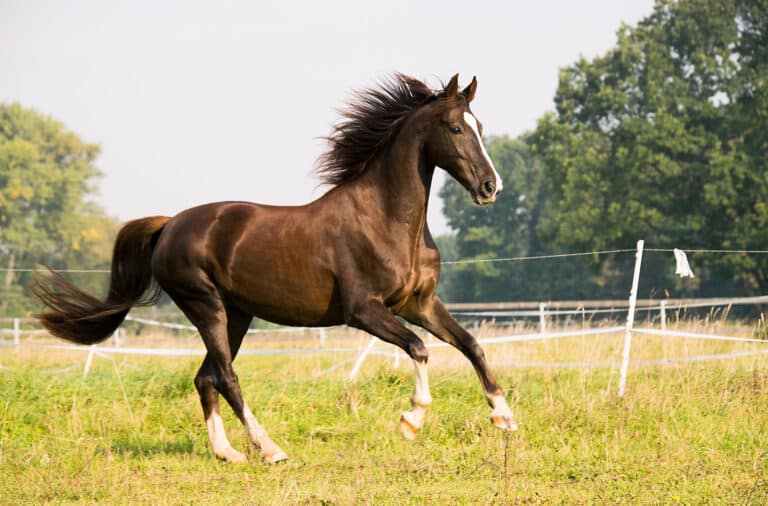
Body Condition: what’s the score?
Too fat, too thin, just right? Determining a healthy weight for your horse can be confusing. Equine nutritionist LEISA HOFSTETTER has some food for thought.
When assessing your horse’s body condition, it is important to adopt a somewhat different approach. Often, we will have a well-formed idea of what a healthy horse looks like, but if we break this down into individual areas of the horse’s body and what that all means, we may find that the horse is actually not as healthy as we thought. Then how should we assess body condition to get an accurate picture of our horse’s overall wellbeing? This is where body condition scoring can help.

In the early 1980s, Don Henneke, an equine scientist in the USA, developed a standardised scale system for assessing equine body condition. This system is still used by equine scientists and horse owners today. Called the Henneke Body Condition Scoring System (BCS), it allows everyday horse owners to make an informed assessment of their horse’s body condition with the aim of improving their health and wellbeing.
One of the things that makes the Henneke System so accessible is that no technical equipment is needed to carry out the scoring. Instead, the horse is assessed by palpating (feeling with your hands) and a visual evaluation.
The objective is to quantify, or put a score on, the amount of fat tissue as opposed to the amount of lean tissue or muscle. In order to do this objectively, individual parts of the body often associated with fat deposits, or the lack thereof, are assessed, then the scores are averaged for the final result.
The areas assessed in the Henneke system are behind the shoulder, the tail head, ribs, wither, the back top line, and the crest of the neck. One of the most common indicators of an obese horse or pony is a ‘cresty’ neck, so termed because the fat deposited along the top of the neck just under the mane actually changes the shape of the neck, giving the appearance of a crest.
On completion of the BCS assessment, the horse is assigned a number from one to nine based on the collective observations of each of the six areas of the body. The healthy weight range for horses is generally accepted to be from four to six:
1: Poor
Poor horses with a score of one are in a dangerously thin condition. They appear extremely emaciated at all six assessment points, with no fat tissue felt whatsoever. Bones protrude visibly at every assessment point and the bone structure itself is easily noticeable. The horse may be lethargic and/or depressed.
2: Very thin
Very thin horses appear emaciated. There will be limited fat felt along the spine, but the vertebrae will still be visibly protruding. You will be able to faintly see the bone structure around the neck, shoulders and wither. The ribs of the very thin horse are clearly visible, as is the tail head, and the points at the hip and the buttock.
3: Thin
The thin horse has a slightly visible neck, shoulder and wither structure. The ribs can still easily be seen, but there is a slight fat covering over them. Fat covers halfway up the sides of the spine, but again, the spine is visible. The bones at the point of buttock can’t be seen, but the bones at the point of hip, although rounded, will protrude. The tail head is also more rounded than in extremely to very thin horses, but still protrudes.
4: Moderately thin
The neck, shoulders and wither of the moderately thin horse are not obviously thin. A faint outline of the ribs is visible and the back has a peaked appearance. At the moderately thin score, the prominence of the point of hip, point of buttock and tail head can depend on the individual horse’s conformation. For example, Arabians and some Thoroughbreds often have protruding tail heads even at a score of five. The point of the hip at the moderately thin score is usually not visible.
5: Moderate (optimum)
The moderate horse’s neck and shoulder blends smoothly into their body. The wither looks nicely rounded and the back is level, with no crease. Ribs cannot be seen, but should be easy to feel. The beginnings of spongy fat deposits can be felt around the tail head.
6: Moderately fleshy
In the moderately fleshy horse, fat deposits have begun at the crest of the neck, wither and behind the shoulder. The fat covering over the ribs feels spongy, but the fat around the tail head feels soft. A slight crease or groove may be seen along the back.
7: Fleshy
The fleshy horse has unmistakable fat deposited along the crest of the neck, wither and behind the shoulder. The ribs can still be felt, but the fat deposits between the ribs are easily distinguishable and easy to find. There may be a noticeable crease or groove down the back. The fat around the tail head is quite soft.
8: Fat
The fat horse has noticeable fat on the crest of the neck as well as general thickening of the neck. Fat is clearly deposited over the wither and shoulder to the point where muscle is not able to be felt. The ribs are difficult to discern underneath a layer of fat. There is a definite crease down the back and the tail head fat covering is very soft.
9: Extremely fat
The extremely fat horse has bulging fat on the crest of the neck, shoulder and wither. There is an obvious crease down the back and fat deposits on the flank, as well as bulging patches of fat on the ribs and tail head.

Doing the maths
Once you have assessed the six areas of your horse and allocated each one a score, add the six numbers together and then find the average by dividing by six. This final figure is the horse’s body condition score. It is important to note that different breeds have different conformations, and to account for this in the assessment process.
Also critical is that the difference between fat and muscle is distinguished when conducting the assessment. For example, many Quarter Horses bred for cutting have a lot of muscle on their rump and in other areas, and can look overweight because of this. However, it is never normal for a horse to have too much fat deposited anywhere on their body, no matter what breed they are, or how well accepted this might be by some in the equestrian community.
Although there are numerous detrimental effects arising from a horse being underweight, many of these are reversible as the horse gains weight up to a healthy score. By contrast, chronic obesity in horses often results in more permanent problems, even after the horse has reached a healthy weight. These issues may include laminitis (founder), equine metabolic syndrome and/or insulin resistance.
Being either underweight or overweight can have a detrimental effect on your horse’s health and wellbeing, so it’s important to assess their body condition objectively. The Henneke System gives you an easy-to-use tool to do just that. Once you have an average score, you can make informed decisions about feeding regimes and if you’re in any doubt, contact your equine nutritionist to enlist their expert help.
Leisa Hofstetter is an equine nutritionist offering ration analysis, designer diets and customised mineral supplements. She can be found at Hof Equine, or email hofequine@gmail.com.



